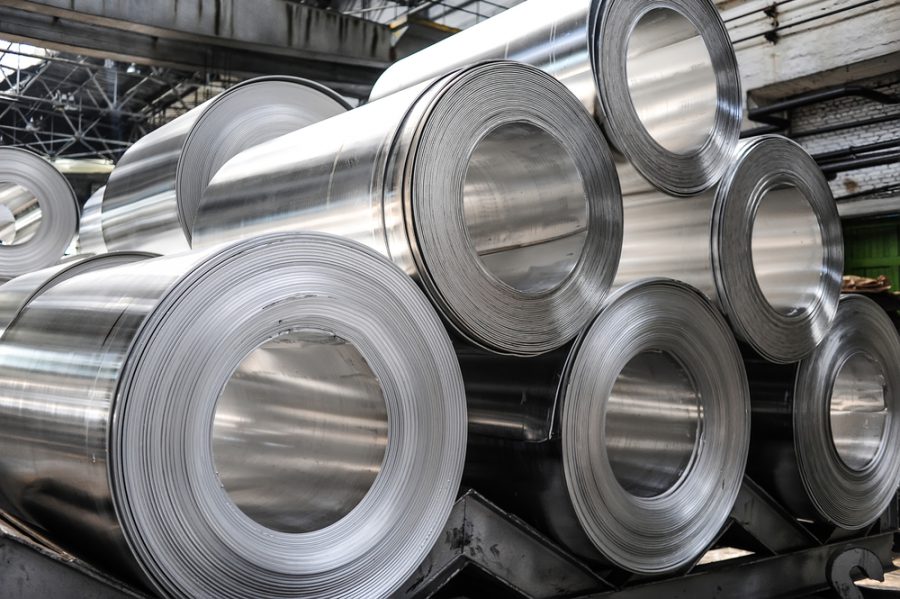LME launches new contracts with steel, alumina best placed to succeed

LONDON, Oct 5 (Reuters) – New steel and alumina contracts have the best chance of succeeding as the London Metal Exchange unleashes 10 new products early next year in an attempt to compete more effectively with rival exchanges, industry sources said.
The new products range from hot rolled coil (HRC) steel to alumina, the raw material for aluminium, as well as cobalt, which is key for electric vehicle (EV) batteries.
The 141-year-old LME also plans to launch a contract for lithium, another important metal for EVs, but that will come later, perhaps in 2020.
The LME, the world’s oldest and largest market for industrial metals like copper and aluminium, has lost market share in recent years to competitors the U.S. CME Group Inc and Chinese Shanghai Futures Exchange (ShFE).
The CME has released a consistent stream of new contracts, while the LME has taken more time to come up with a smaller group of new products.
But the LME, owned by Hong Kong Exchanges and Clearing Ltd. , has developed new technology that makes launching these new contracts easier, faster and less expensive.
“The core will still be the main LME base metals contracts, but they’re not afraid to give some new ones a try,” said Colin Hamilton, director of commodities research at BMO Capital.
“If they get one to work it will probably be steel while alumina is also an interesting one given the volatility.”
“If they get one to work it will probably be steel while alumina is also an interesting one given the volatility.”
The CME already has HRC steel and alumina contracts, which have struggled to gain strong liquidity, and the LME will face the same challenge.
“The LME is facing a lot of competitive pressure from the CME in particular, but also ShFE. The LME has to respond in kind,” said Robin Bhar, head of metals research at Societe Generale.
Regional HRC Contracts
The existing HRC steel contract on the CME’s Nymex exchange is for U.S. metal only, based on consultancy CRU’s U.S. Midwest index.
The LME hopes to go one step further by having three regional contracts covering Europe, North America and China.
“We are seeing strong appetite for our HRC contracts and expect these to help extend the record volumes we’re currently seeing in our ferrous offering,” the LME told Reuters in an emailed statement.
HRC steel is used in vehicles, agriculture machinery and rail equipment.
The LME already has steel rebar and scrap contracts and the latter hit record volumes in August with average daily volumes up 88 percent so far this year.
The LME rebar contract has not been as popular, however, with average volumes down 68 percent for the first eight months.
Volatile Alumina
The LME also plans to launch a contract for alumina, the raw material to make aluminium, which has seen sharp price swings recently.
The alumina price has twice spiked and tumbled so far this year. It surged 80 percent during March and April before sliding the following two months before jumping 41 percent by early September.
Bhar said people at a recent aluminium conference seemed interested in the prospect of hedging exposure to aluminium raw materials.
But it may be difficult to get liquidity.”
“Delegates seemed to like the possibility of risk management through an alumina contract, but it may be difficult to get liquidity,” he said.
The CME contract is indexed against Platts’ assessment of the Australian price, while the LME plans to announce in coming weeks which index providers it will use for its alumina, HRC steel and other cash-settled contracts.
Cobalt
The LME already has a physically-settled cobalt contract , but it hopes to gain more traction with a cash-settled product.
Gaining a foothold in such a small, illiquid market is difficult, even with the excitement recently about EVs, said Tom Price, head of commodity strategy at Macquarie.
“Most transactions are directly between industry and consumers, the LME is a sideshow,” he said.
Other futures contracts the LME plans to launch early next year consist of two regional aluminium premium contracts, minor metal molybdenum plus options in gold and silver.
(Reporting by Eric Onstad; Editing by Edmund Blair)
{{ commodity.name }}
{{ post.title }}
{{ post.date }}

Comments